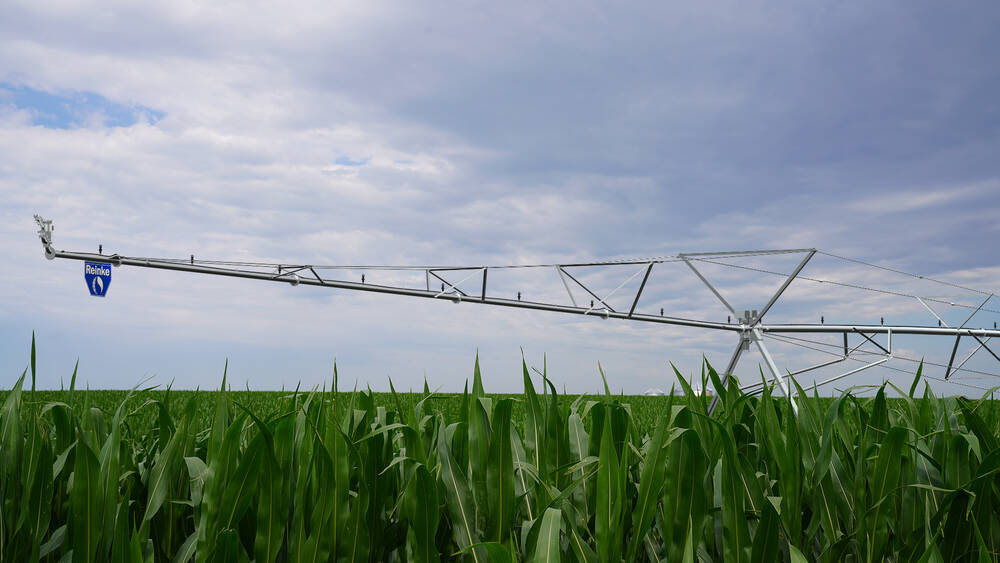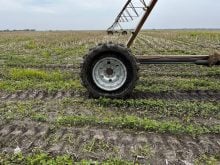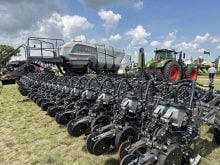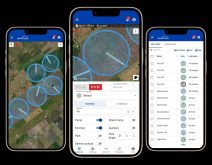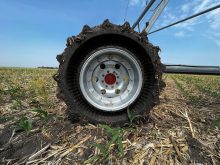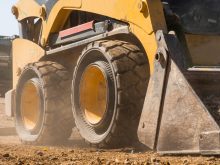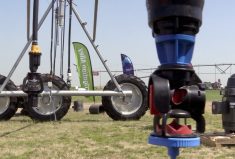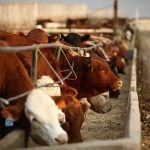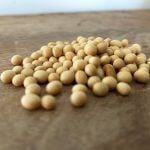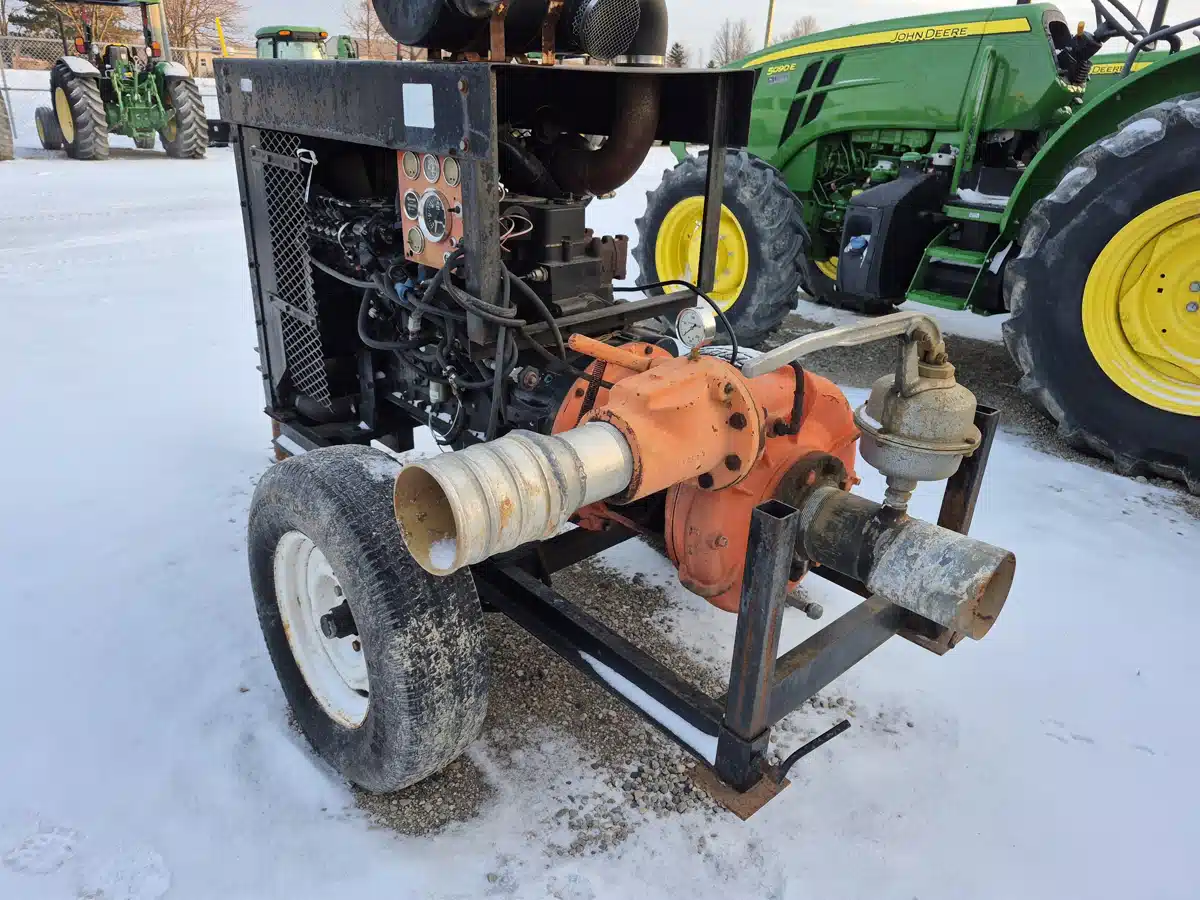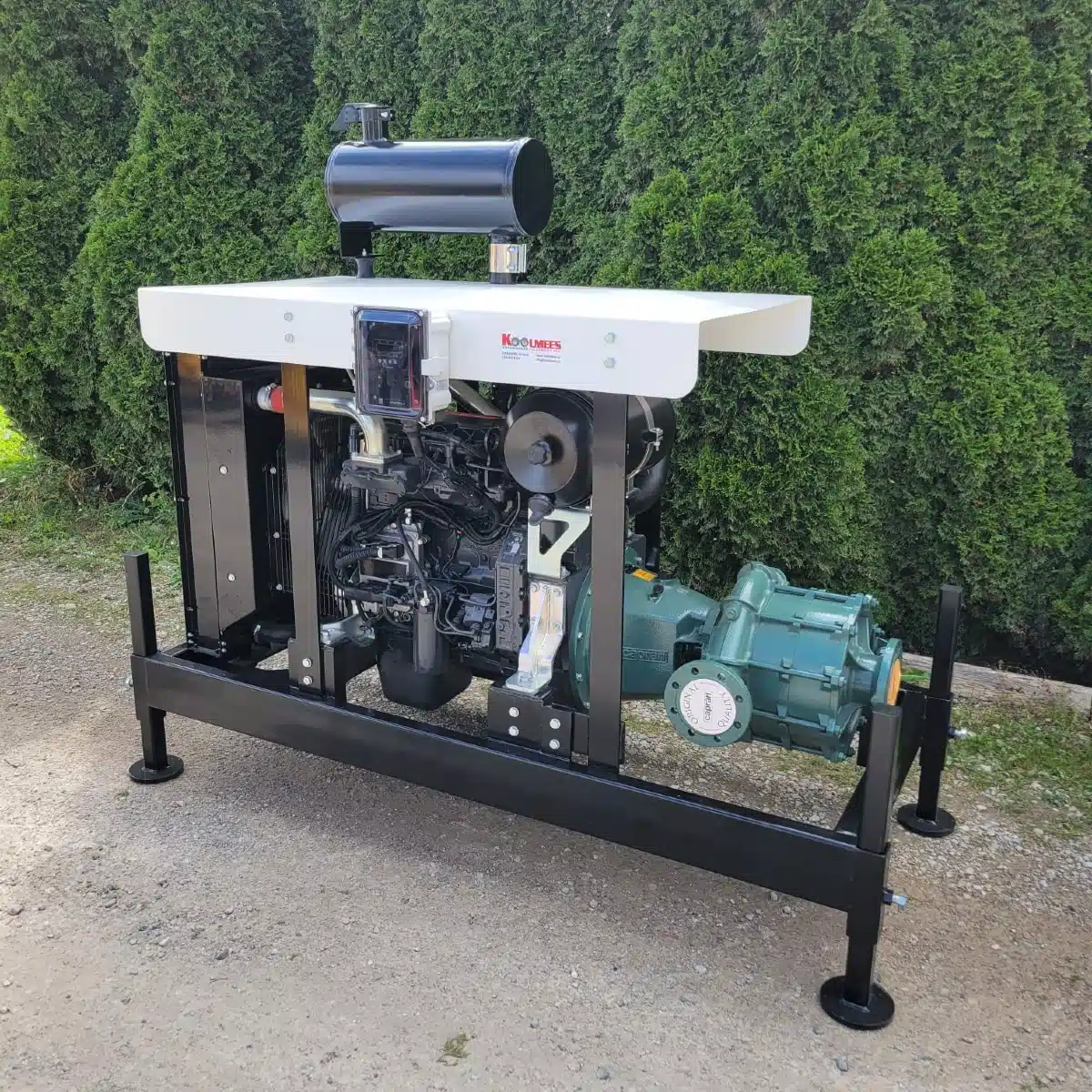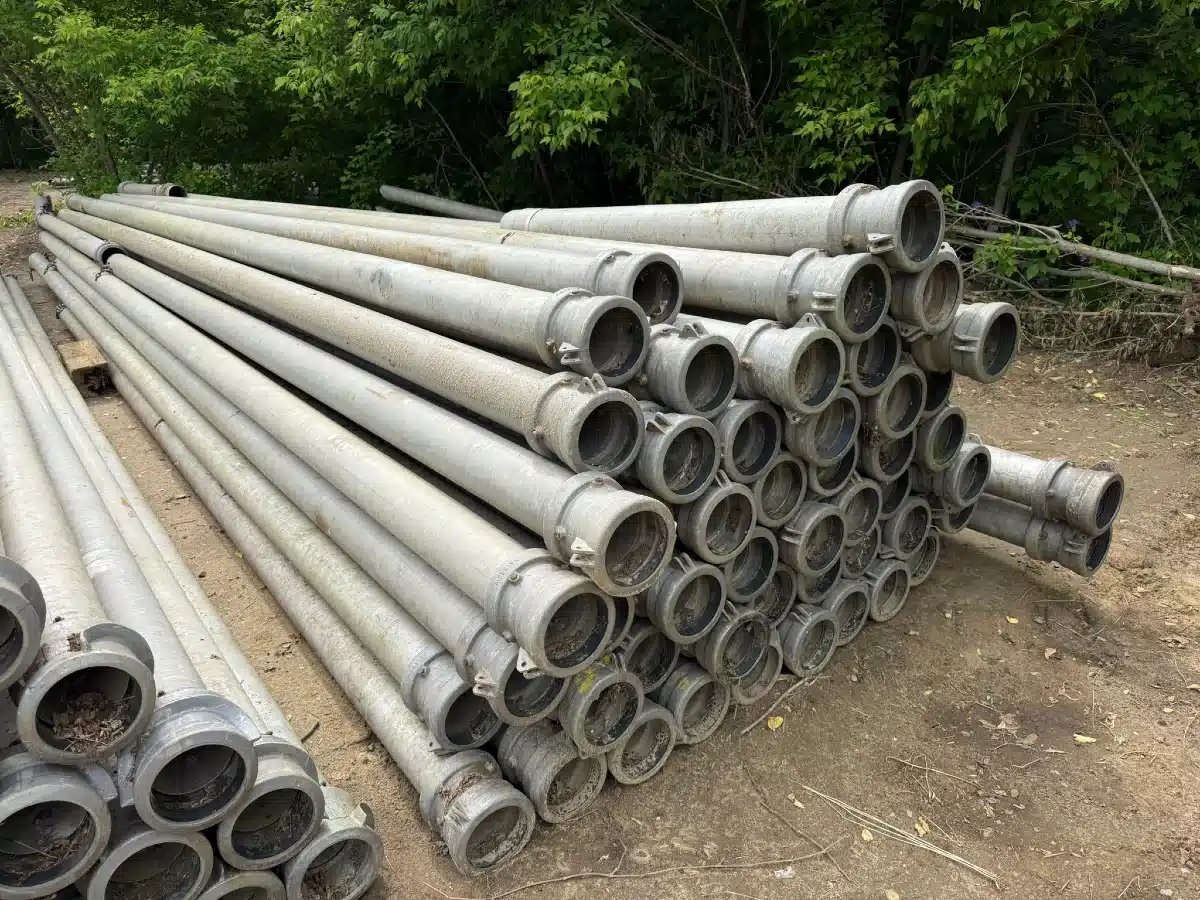This spring Reinke will begin offering its newest centre-pivot irrigation system, the E3.
From a precision irrigation standpoint, the new system will be the most advanced machine on the market, says Chris Roth, president of Reinke Manufacturing — “mostly due to the even outlet spacing from the pivot centre to the end boom or the swing-arm corner.”
The Nebraska company describes E3 as its first precision series of spans and end booms with uniform coupler spacing — which helps ensure a uniform water application rate along the entire length of the machine.
Read Also
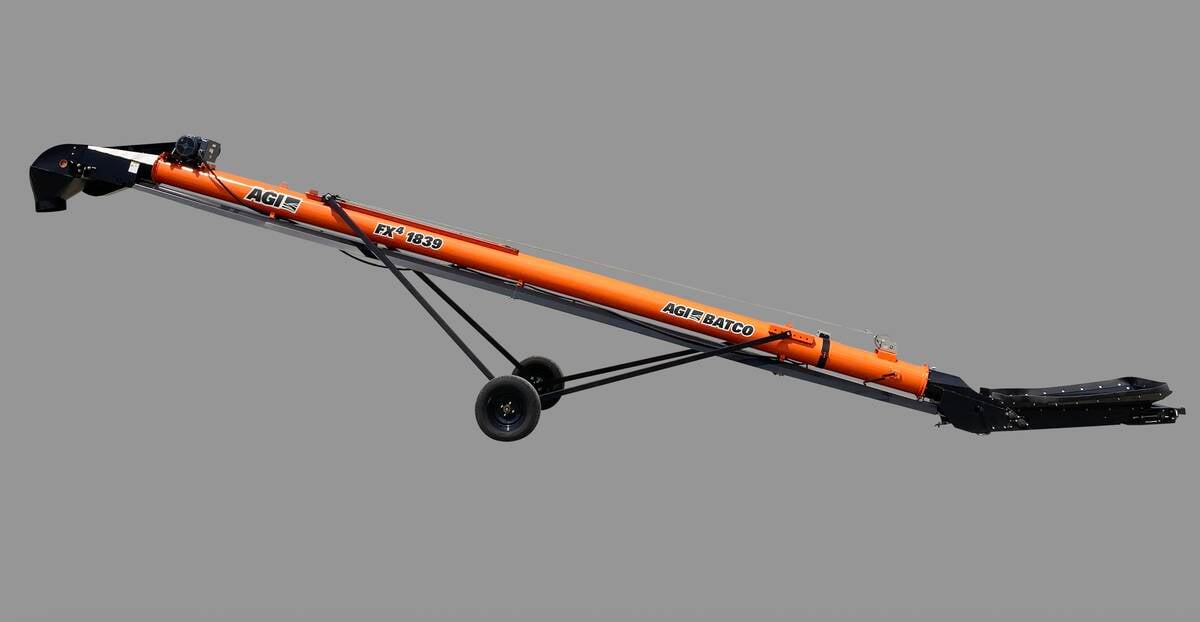
AGI rolls out two new high-throughput grain conveyors
For grain growers needing to move a lot of bushels quickly, AGI offers two new high-throughput conveyors: the gas-over-hydraulic FX4 SP, and the top-drive electric FX4 18S.
“We’ll be very precise in how we apply water from the beginning to the end,” says Roth. “It will be either 30- or 60-inch spacing, even across the tower tops which is the difficult part of irrigation systems to get that accomplished.”
“It doesn’t matter if it’s a 10-inch or a six-inch system, it will have a uniform spacing,” technical sales manager Jake Beam adds. “There are some machines on the market now that have uniform spacing, but you’re fixed on span sizes, lengths and sizes of pipe. This will be the first one we can build to your particular needs in the field.”
E3 systems will be available in 80- to 220-foot working widths at 20-foot intervals, as well as the popular 175-foot size.
Among other new features included on the E3 are V-ring seals that don’t restrict water flow and won’t fail due to UV exposure; maintenance-free bearings; and the new ReinLock anti-racking truss system, engineered for better strength when dealing with uneven ground.
E3 models will also be available with Reinke’s swing arm system, which is designed to irrigate field corners.
“A couple of years we came out with our ESAC,” says Beam. “It’s an electronic swing arm. These machines are so smart they know exactly where they’re at in the field, they know how much area they’re covering and precisely how much water to put in that location. It’s been a game changer in water uniformity under the swing arm.”
Because irrigation systems are so unique to each farm, most systems need to be custom-designed to fully meet growers’ needs, says Roth — and that includes using the right metals for longevity to cope with pH levels in the local water supply.
“We’ll ship out thousands of these every year, and virtually every one is customized. The majority of machines that go out are galvanized, but you can also get a painted Corten machine. (Corten is) like a weathering steel. If you go over a bridge and see where the metal is black, that is probably Corten metal.
“We have aluminum, stainless steel and then we have galvanized on the outside and black poly on the inside. It all comes down to whatever your water quality is.”
Growers also need to take into account the type of soil. Sandy soils have different infiltration rates than clay, so different droplet sizes might make a difference, depending on the crop grown. Also the speed the pivot moves through the field is a factor to consider.
Even water distribution is important in maximizing yields, Beam says.
“If I build a quarter-mile long machine, my last tower is going to cover almost 30 acres, so as you go out on the machine you have to increase that water demand to keep up. The uniform spacing is going to allow us to make a nice, steady step up in nozzle size. We don’t have to worry about filling in gaps. You should be increasing yields, because you’re getting more consistency.
“It’s a very sophisticated system, but once it’s out in the field and designed properly, it’s very easy to use. The hardest part with irrigation is always when and how much.”
The digital operating system on the E3 allows growers to make those decisions right from their cellphones. Connected to soil moisture sensors, it can provide simple instructions about when to begin irrigating.
“One of our partners, CropX — they do a very good job of soil moisture probes,” Beam adds. “They break it down very simply. There’ll be a note inside their platform that says ‘Irrigate now.’ It will tell you how much, and how much moisture holding capacity is left, so you don’t over-irrigate. And you can keep that soil profile open enough so that if a natural rain event came through you actually get to capture all that.”
“When you control your water application, you need to make sure it’s pretty much just right,” Roth says. “Telematics is a huge part of what we do today.”
For those with an existing system, wondering when it may make sense to upgrade to a new machine, Beam says a lack of uniform watering is a key indicator something isn’t right.
“I think a big thing people need to watch is their uniformity. A good way for people to monitor if their pivot is performing as it should is — rule of thumb — every month, document pressures at the centre point.
“If those pressures are changing throughout the year or month to month, there’s something happening where flows are going somewhere they’re not supposed to, or we’re not putting out as much water as we should; we’re not putting the water where it should be going.”


